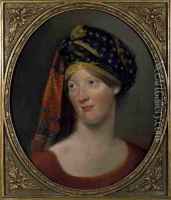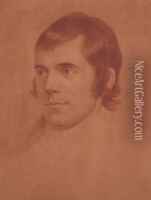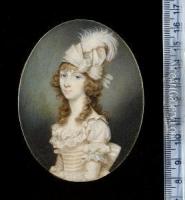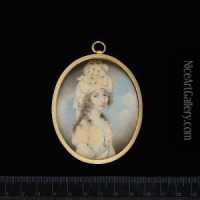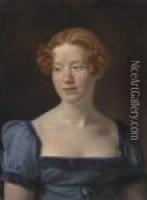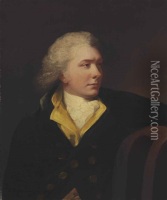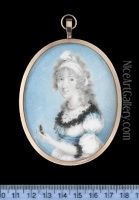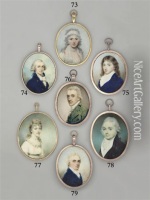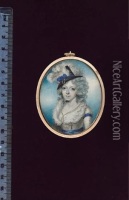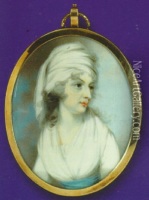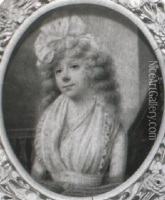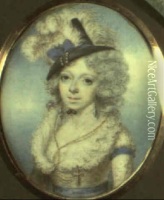Archibald Skirving Paintings
Archibald Skirving was a Scottish portrait painter born in 1749 in Athelstaneford, East Lothian. His early life was spent in his native Scotland, where he developed an interest in the arts. Not much is documented about Skirving's initial training, but it is known that he did not enjoy immediate success as an artist and thus decided to travel abroad for further study and work.
In the 1770s, Skirving moved to Rome to pursue his artistic education, a common practice among European artists of the time who were seeking to refine their techniques and study the masterpieces of the Renaissance and antiquity. During his time in Italy, Skirving was greatly influenced by the classical art and culture that surrounded him. He absorbed the lessons of Italian painting, which would later inform his own style, characterized by a strong sense of line and form, softened by a warm sense of color and light.
Skirving returned to Britain in the 1780s and settled in Edinburgh, where he began to establish himself as a portraitist. He worked primarily in pastels, a medium that was gaining popularity at the time for its soft tones and the speed with which it could be used to execute a portrait. Skirving's works from this period are noted for their nuanced rendering of his subjects, capturing both their physical likeness and a sense of their inner character.
One of Skirving's most famous portraits is that of the Scottish poet Robert Burns. Although Skirving never met Burns in person, he created the portrait posthumously in 1802 based on Alexander Nasmyth's painting of Burns. Skirving's pastel interpretation has become one of the iconic images of the poet.
Despite being a respected artist of his day, Skirving never achieved the level of fame or financial success enjoyed by some of his contemporaries. He remained a respected figure within the Scottish artistic community until his death in 1819. Today, Archibald Skirving's works are considered important contributions to the portrait art of the late 18th and early 19th centuries, and they provide a valuable insight into Scottish cultural history and the development of pastel painting as a serious art form.
